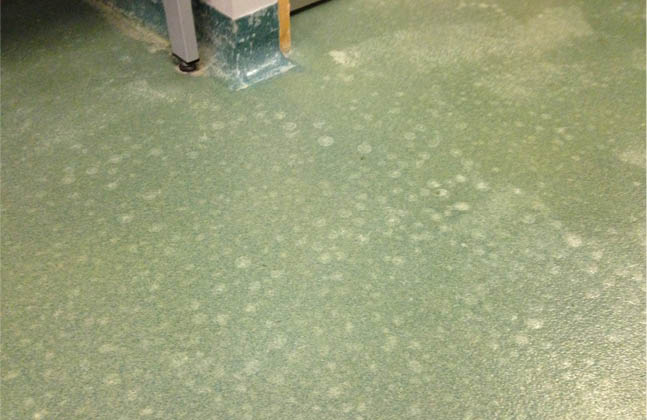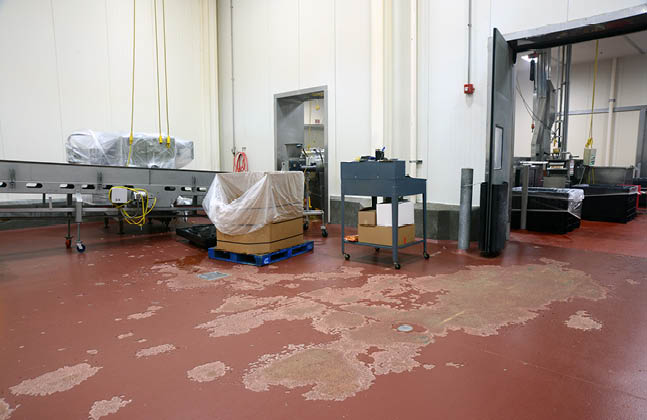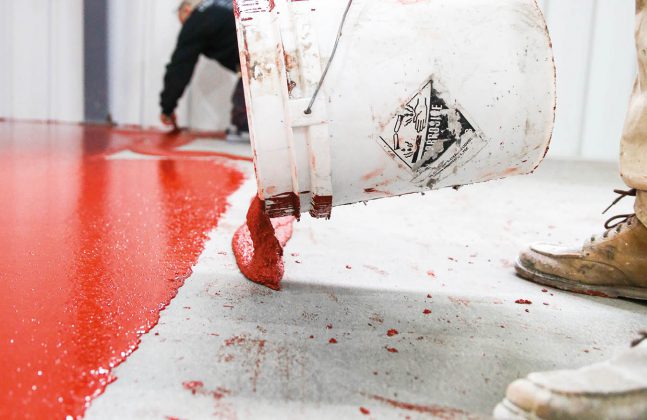Saving money on your flooring installation isn’t about choosing the cheapest contractor and products – it’s about engineering value at every stage of the process. From planning to material selection to installation, there are dozens of opportunities to capture savings — and, more importantly, add value — to your building’s flooring installation.
Value engineering isn’t a difficult concept to understand — it’s a systematic approach to identifying the best-value solutions based on your budget, application and design needs. It’s about finding the highest value at the lowest cost.
But value engineering is difficult to implement. It depends on a wealth of knowledge about the upfront and ongoing costs of different products and cost-saving installation best practices. Only the most experienced contractors know the industry well enough to apply value-added practices before and during an installation.
For building owners with tight budgets, it’s tempting to cut corners —choosing a cheap (but short-lived) product, choosing a low-cost (but inexperienced) contractor— but all of these decisions have costs of their own, such as:
Moisture damage to your floor
Moisture-related failure of your flooring adhesive can happen when an inexperienced contractor doesn’t test the subfloor prior to installation. This can also void your product’s manufacturer warranty.

Moisture damage in flooring
Choosing a product unsuited to your application
Selecting a product purely based on price —and ignoring the needs of your application— can result in premature failure of your flooring system.
Think of the old saying, “buy cheap, buy twice.” Cutting corners may save money up front, but it can cost you twice as much later on if the flooring system fails prematurely. Don’t focus on upfront savings — focus on life cycle cost and value. Framing the price of your flooring installation in terms of life cycle cost allows you to save money at the time of the installation, and for years to come.

Flooring failure can happen with cheaper materials, creating an unsafe working environment
A few questions facility managers need to ask before starting a flooring project
Value engineering is the key to costs saved, value added and schedules met. As a business owner, it’s up to you to ask the right questions before your flooring installation to ensure you get the flooring you want at the price you need.
Use these questions to guide your selection of products and contractors:
What wear and tear will this flooring system need to withstand?
Your flooring system needs to withstand all the challenges of your application for the time in which you’ll be using it. If you’re only going to be in the building for the next three years, you don’t need a highly durable product. Likely, though, you’ll want a product that will perform —and maintain its appearance— for the next ten years or more. Of course, this means different things for hospitals than it does for heavy-duty kitchens. You’ll need to evaluate your building’s particular needs, and work with your contractor to select the product best-suited for each area within your facility.
What functions do I need this flooring to serve?
Do you need sound-absorbent flooring? Do you need slip resistance? Should you install using a floating or non-floating method? Do you need to achieve a specific design aesthetic? Or perhaps you’re working toward LEED certification for your building. You need to be able to tell your flooring contractor what you expect out of your flooring. Then they can make product recommendations perfectly aligned with your vision for the building.
What maintenance is required for each product I’m considering?
Some products require very little maintenance (i.e., regular mopping), while other products require frequent and extensive upkeep (i.e., regular waxing, refinishing, polishing, etc.). Because maintenance costs can sometimes exceed the upfront costs of a product, it’s important to do a life cycle cost analysis for each material you’re considering. Examine the upfront cost of the material plus the estimated maintenance costs, divided by the number of years it’s expected to last. A life cycle cost analysis should give you a more accurate idea of the true cost of each material you’re considering.
How much budget do I have for this project?
Even the smartest planning can’t create a big budget where there isn’t one. You need to know your bottom line. It’s your flooring contractor’s job to find ways to maximize the value of your budget by choosing the right product and amplifying the value of each labor hour through proper planning.
Who will manage logistics throughout the project?
Proper planning keeps a flooring project going. By ensuring someone —ideally your flooring contractor— will take ownership of material selection, product staging and logistics management throughout your project, you’ll not only save time and money, but also maximize the value of your investment.
The answers to these questions will empower you with the information you need to choose the team and products that will provide the greatest value for you and your building. From there, you can debate the merits of all the products that meet the needs of your application and fit the constraints of your budget.





